Architecture isn’t just about buildings; it’s about storytelling—the tale of eras, cultures, and the evolving world around us. Some structures have endured through centuries and are still captivating and inspiring us today. From ancient wonders that defy time to modern skyscrapers that pierce the sky, let’s go on a visual journey through 10 iconic architectural marvels that will leave you breathless.

Constructed nearly 900 years ago, Angkor Wat is a colossal site the size of the city of London that holds the title of the world’s largest religious monument. It stands as a remarkable example of advanced architecture by the Khmer Empire, boasting classical Angkorian styles adorned with intricate stone carvings and decorative artwork.Angkor Wat is like a tiny version of the universe carved in stone, depicting a model of the cosmic world here on Earth. The main tower at its center represents the mythical mountain Meru, the core of the universe. Its five towers symbolize Meru’s peaks, while the outer walls represent the mountains at the world’s edge, and the surrounding moat stands for the oceans beyond. Angkor Wat continues to captivate with its grandeur, holding its place among the greatest architectural achievements globally.
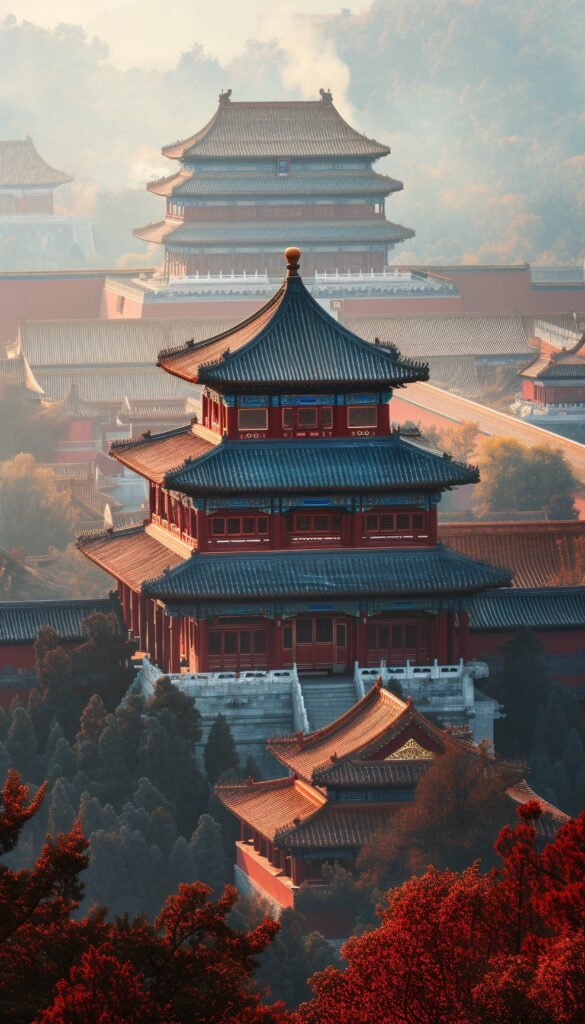
The Forbidden City is a stunning example of traditional Chinese architecture, spanning 72 hectares and comprising around 980 buildings. This architectural marvel is steeped in Chinese cultural influence, with every detail reflecting traditional design principles. The layout follows the concept of “heaven central, mankind left, and nature right,” meticulously planned according to this principle. The Forbidden City boasts the world’s largest collection of well-preserved wooden structures, predominantly painted in red, symbolizing auspiciousness, and yellow, in line with feng shui. Its decorations feature imperial symbols like dragons and phoenixes, along with geometric patterns and garden motifs, highlighting its cultural and historical significance.
Taj Mahal, India
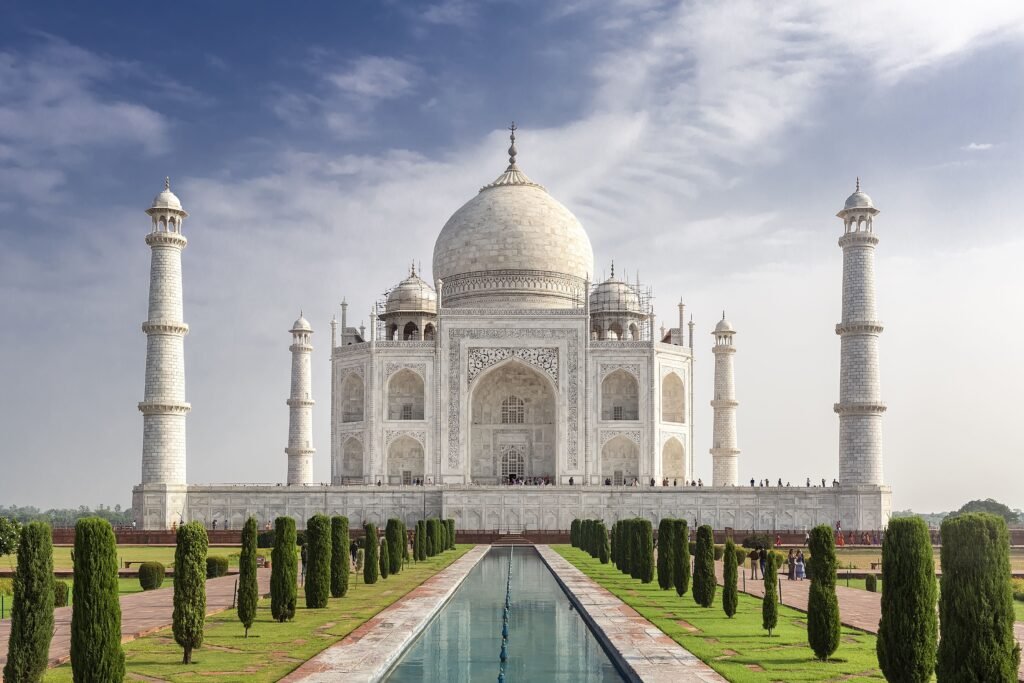
When talking about the architectural marvels of the world, one cannot help but mention the Taj Mahal, the symbol of love. Famous for its breathtaking Mughal architecture, the Taj Mahal’s surreal beauty is highlighted by its intricate details, stunning calligraphy, and gleaming white marble. UNESCO refers to it as ‘the jewel of Muslim art’ due to its precious stonework and exquisite decorations. This timeless masterpiece, attracting tourists globally, was built by Mughal Emperor Shah Jahan. He assembled the finest artists, architects, craftsmen, and carpenters of the era to create this extraordinary monument, which continues to enchant all who visit.
The Great wall of China – China

Stretching an impressive 13,000 miles across hills, plains, and deserts, the Great Wall of China stands as the world’s longest man-made barrier. Constructed by the Ming Dynasty in the 16th century to defend their territory, the wall took nearly 2,000 years to complete. This iconic structure embodies Chinese culture and heritage. It comprises walls, passes, and signal towers, each built with materials such as stone, earth, and bricks, chosen based on the region’s geography. The architectural design of the Great Wall is a testament to Chinese engineering prowess, creating a magnificent structure that extends as far as the eye can see, showcasing the nation’s remarkable ability to construct such a monumental feat.
Burj Khalifa, UAE
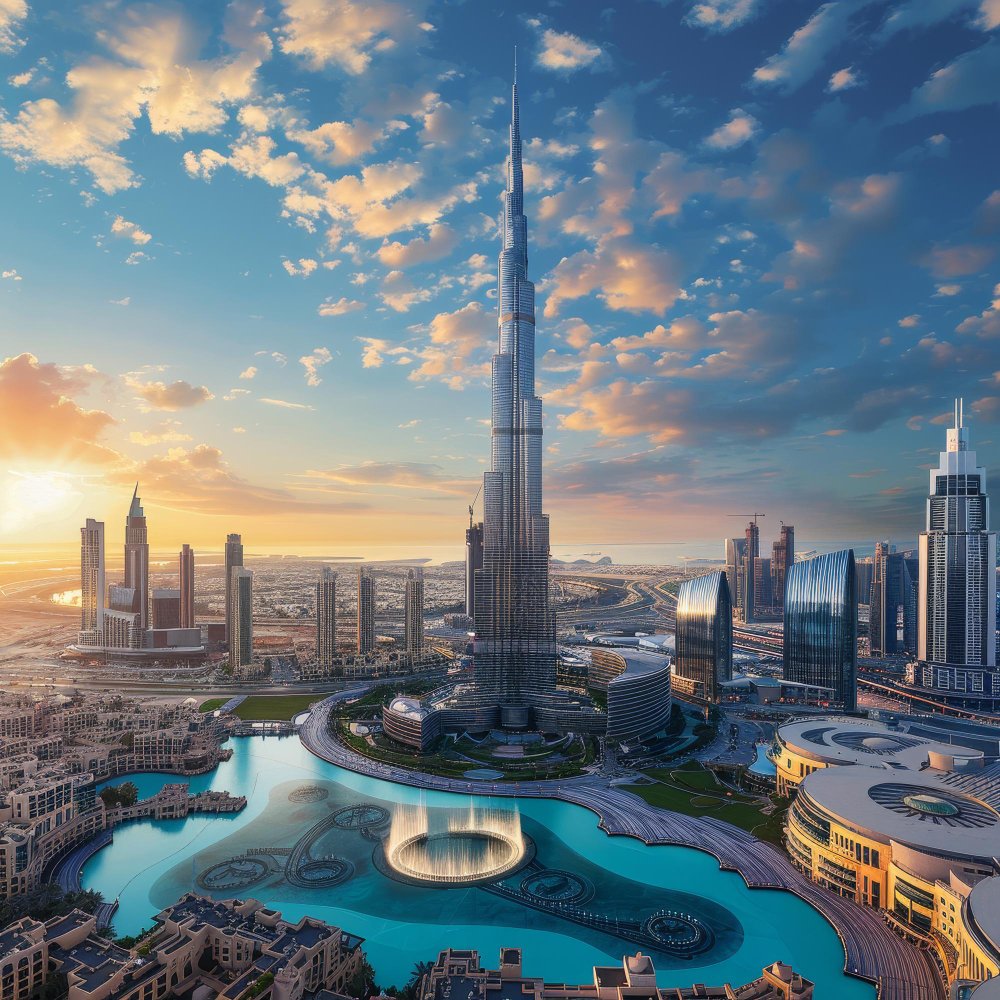
A building so tall it can be seen from 100 kilometers away, the Burj Khalifa dominates the Dubai skyline. As the tallest building in the world, it’s impossible to miss. The architectural journey of the Burj Khalifa is fascinating, having overcome numerous challenges to achieve its iconic status. Its design draws inspiration from the desert and a regional desert flower, blending cultural influences with cutting-edge technology and modern aesthetics. Towering at 828 meters with 163 floors, the Burj Khalifa is a marvel of material, geometry, history, metaphor, and symbolism. It proudly stands as a testament to the power and vision of the Arab world, embodying the essence of its name and the remarkable journey it represents.
Guggenheim Museum Bilbao, Spain
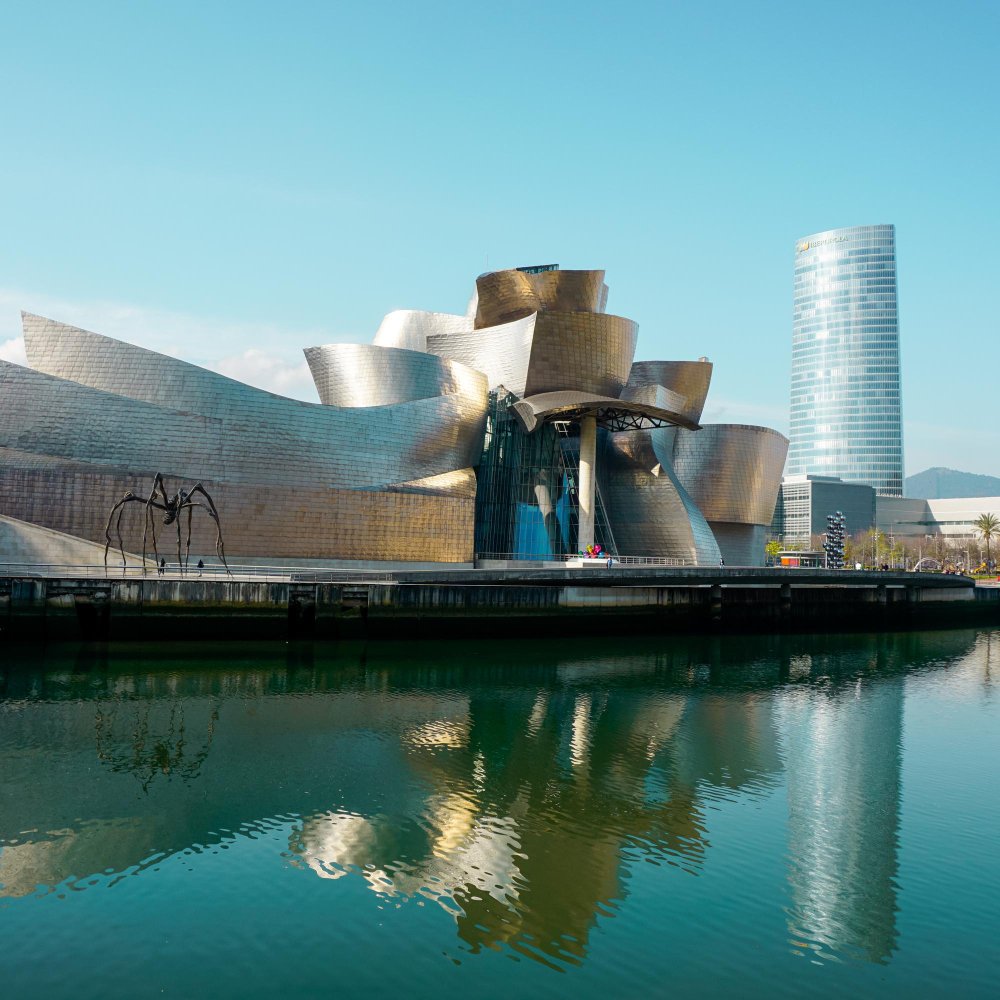
The Guggenheim Museum Bilbao is a stunning blend of intricate, swirling forms and captivating materials, designed to meet a complex program within an industrial urban setting. Situated on the edge of the Nervion River in Bilbao, Spain, it draws over 10 million visitors annually. The city of Bilbao experienced remarkable growth following the museum’s construction, a phenomenon now known as the ‘Bilbo effect.’ Built with titanium, limestone, and glass, the museum’s curved exterior is designed to reflect light and respond dynamically to the sun and weather, creating an iridescent appearance. It stands as a globally recognized example of statement architecture, celebrated for its unique complexity and iconic design.
Le Mont Saint-Michel, France
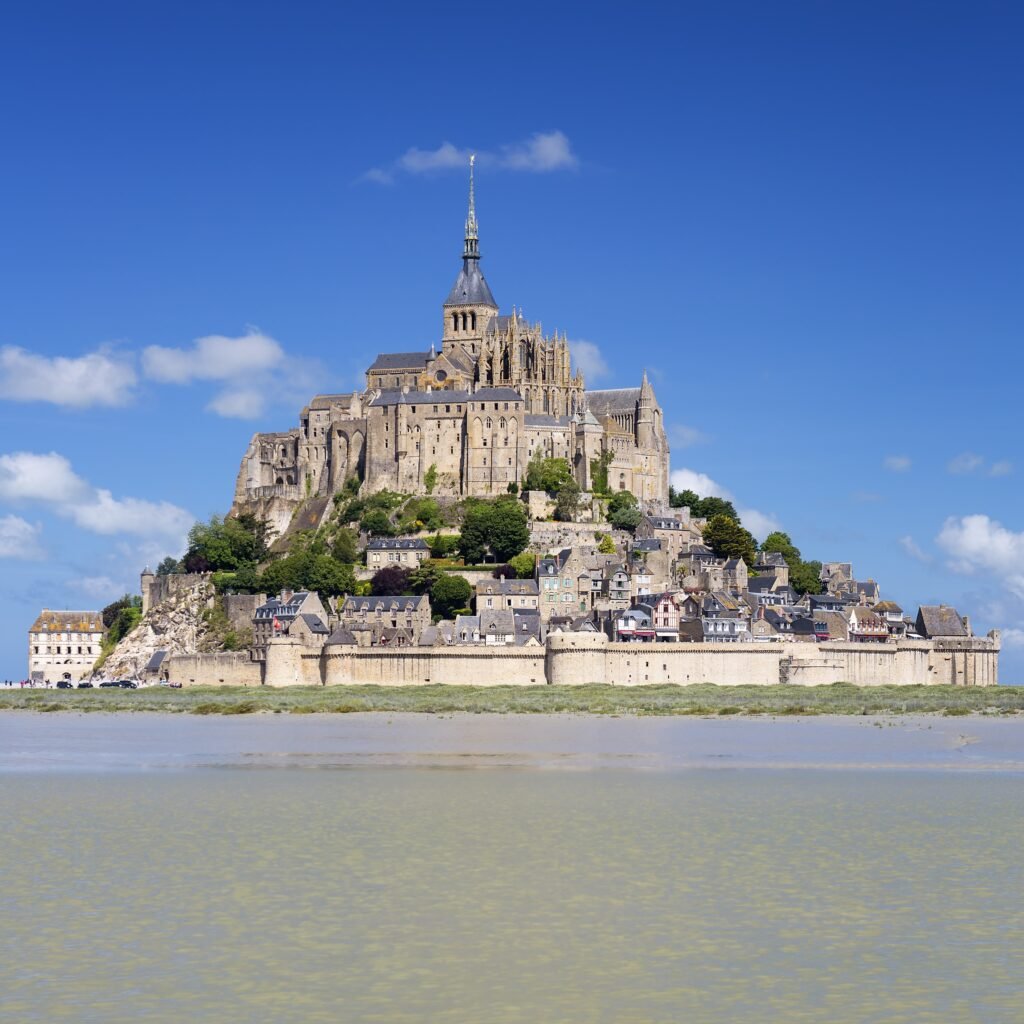
From glancing at the photos, you might mistake it for a setting from ‘The Lord of the Rings’ or ‘Tangled,’ but Mont Saint-Michel is a real commune in Normandy, France. It spans around 247 acres and has inspired many with its enchanting beauty. Dubbed ‘the wonder of the western world,’ this architectural marvel showcases Romanesque and Gothic styles from medieval Christian civilization. Built over 1,300 years ago, the fortified island is home to the monastery that shares its name. Atop the hill stands the majestic abbey, with great halls, stores, and housing below. Accessible to pilgrims during low tides and serving as a fortified commune during high tides, Mont Saint-Michel stands as a testament to both history and architectural brilliance.
Gardens by the Bay, Singapore

Gardens by the Bay in Singapore is not just a garden—it’s a spectacular blend of nature and cutting-edge architecture. Inspired by the graceful form of orchids, Grant Associates’ masterplan seamlessly integrates stunning architectural structures with vibrant horticultural displays, daily light and sound shows, serene lakes, lush forests, and diverse dining and shopping options. This ambitious project also features advanced environmental infrastructure, creating a nurturing environment where endangered plants thrive, even those not typically found in Singapore. It’s a key part of Singapore’s vision to be a “City in a Garden,” showcasing the city’s commitment to horticultural excellence and garden artistry on a global stage.
Sagrada Familia, Spain
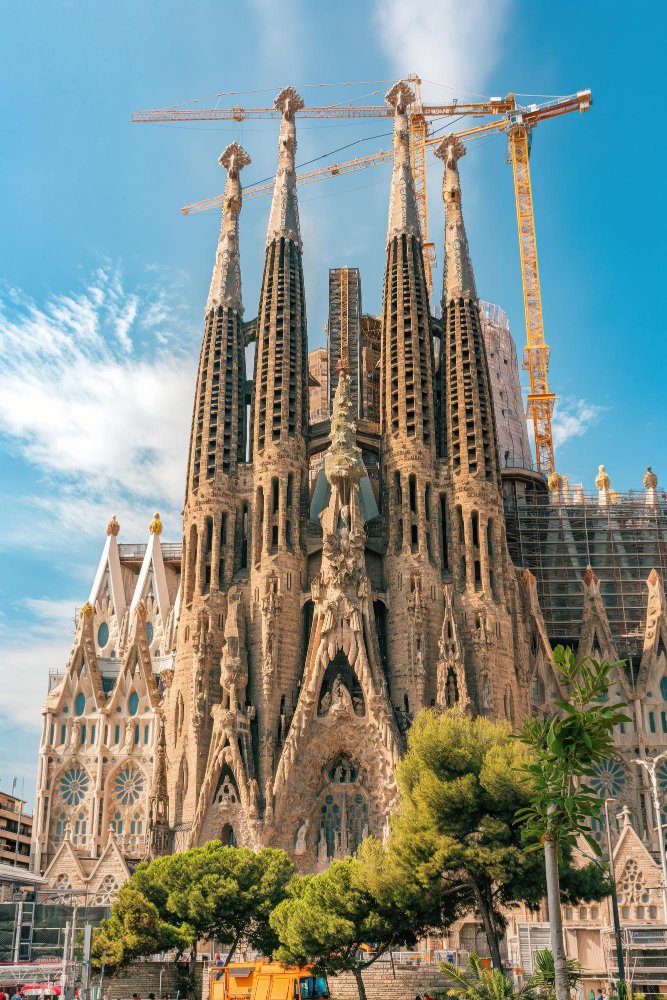
If Tolkien’s elves were to create architecture, it might resemble something akin to the Sagrada Familia. This majestic structure embodies intricate artwork, vibrant colors, and extravagant details. Construction of the Sagrada Familia began in 1882 and is projected to finish in 2026. Located in Barcelona, Spain, it is a vast Roman Catholic Church designed by architect Antoni Gaudi, who dedicated himself to the project until his death in 1926. The Sagrada Familia blends late Spanish Gothic and Art Nouveau styles, utilizing complex geometric forms like logarithmic spirals, elliptical arcs, and fractals to create a stunning and harmonious atmosphere. The building also features elaborate sculptures and is revered as a masterpiece of modernist architecture.
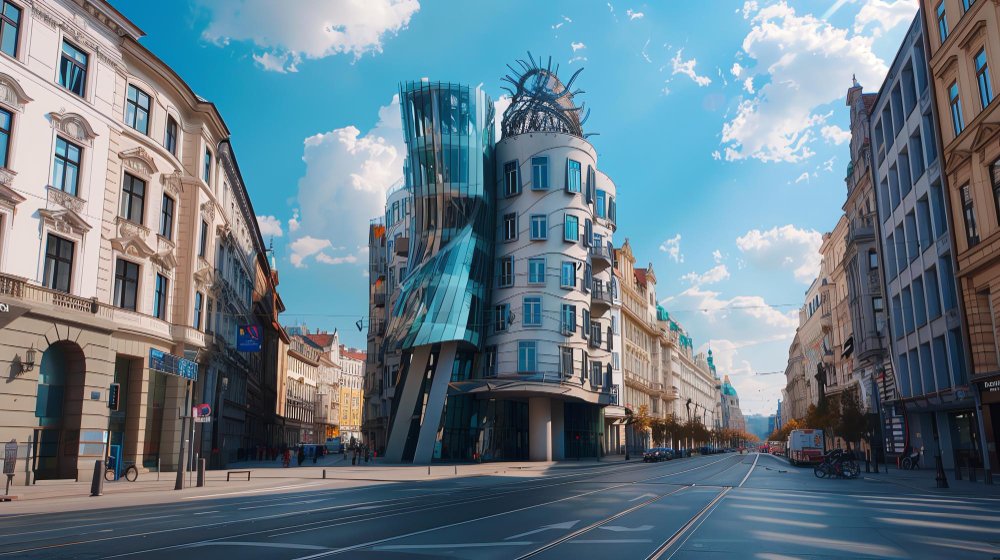
Amidst Prague’s baroque, gothic, and art nouveau architecture stands the unconventional and controversial Dancing House, affectionately nicknamed “Fred and Ginger.” Designed by Canadian-American architect Frank Gehry and Croatian-Czech architect Vlado Milunić, this building stands out for its non-traditional, deconstructivist shape. Departing from the clean lines and predictable textures of traditional architecture, the Dancing House challenges norms with its playful and dynamic design. It metaphorically portrays a dancing couple, with two central pillars symbolizing the interplay between static and dynamic forces, similar to yin and yang.
Conclusion
Whether it’s the time-defying beauty of the Angkor War or the modern masterpiece of the Burj Khalifa, they stand as a testament to the legacy of architectural innovation. Being architecture students, these places should definitely be on your bucket list. They give insights into human creativity, engineering prowess, and the unwavering pursuit of beauty.




